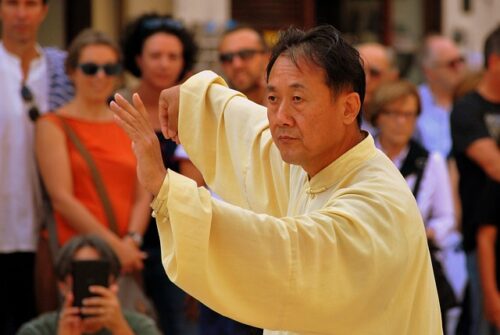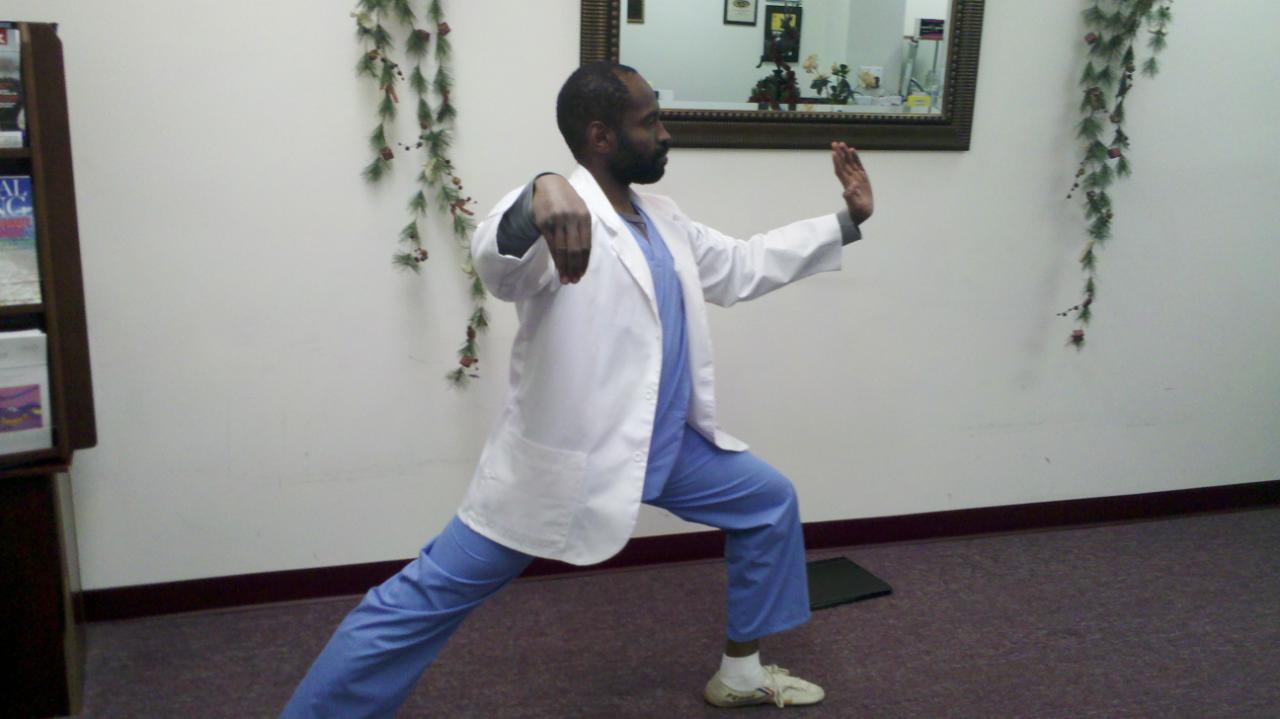Table of Contents
Let’s dive into a meta analysis of tai chi and qi gong in the role of stroke rehabilitation. I have personally worked with a one or two patients in the area of stroke recovery and tai chi as a supplemental part of their entire health regimen. Even though we did not make a full recovery, we are able to make significant improvements in areas such as knee flexion, better balance, and improved quality of life.
Background
- Stroke remains a leading cause of death and disability globally. While the incidence of stroke is decreasing, the lifetime risk of stroke is increasing due to an aging population and more prevalent risk factors.
- Survivors often face permanent disabilities, impacting daily activities and walking, leading to reduced muscle strength, impaired mobility, and diminished quality of life.
- Lifestyle-related risk factors, mostly modifiable, significantly influence stroke outcomes. Physical activity is crucial for rehabilitation, enhancing balance, walking, and overall physical function. Conversely, physical inactivity can exacerbate disabilities.
When people survive a stroke, they often have a tough time moving around and doing everyday tasks because of muscle weakness and coordination problems. Researchers know that staying active is crucial for getting better, but they’re always looking for new ways to speed up recovery. That’s where Tai Chi and Qigong come in — these traditional Chinese exercises could be a game-changer. They’re all about slow, focused movements, deep breathing, and a calm mind, which could be just what the doctor ordered for stroke recovery. So, the researchers dived into all the studies they could find on the topic to figure out just how helpful these practices could be for stroke survivors.
Tai Chi and Qigong (TCQ)
- TCQ, traditional Chinese medicine practices, share core principles. Qigong, the older practice, has evolved into various forms, including the well-known Tai Chi.
- Evidence suggests TCQ’s efficacy and safety in improving health conditions, particularly motor functions post-stroke, leading to their combined consideration for this review.

Mobility Recovery
- Improving mobility is a primary goal in stroke rehabilitation. Previous analyses confirm TCQ’s benefits for stroke-related mobility functions, with one study highlighting its effectiveness for limb function rehabilitation specifically.
- However, these studies often didn’t differentiate the impacts on various mobility aspects (e.g., walking ability, dynamic balance, daily activities) due to limited data from randomized controlled trials (RCTs).
Research Methodology
- The researchers conducted an extensive literature search up to December 2021, sourcing data from multiple global and regional databases.
- They included dissertations and conference proceedings to minimize publication bias, prioritizing peer-reviewed articles in cases of content duplication.
Strengths
- The research is robust due to its extensive scope, drawing from databases in three different languages and countries where Tai Chi and Qigong (TCQ) are widely practiced.
- The quality of the trials included is commendable, with none at high risk of bias and almost 30% at low risk of bias.
- There seems to be a low possibility of publication bias for different components of mobility, except for walking ability.
Study Limitations
- A significant limitation was the heterogeneity among the studies, attributed to the wide range of stroke-related symptoms and rehabilitation stages among participants.
- The TCQ interventions varied in timing, intensity, and duration, and mobility was assessed using various methods, contributing to the inconsistency in results.
- Despite subgroup analysis, there remained considerable heterogeneity across the studies, as indicated by a large prediction interval.
Implications for Future Research

- The study suggests the need for further research to determine whether TCQ is best used as an adjunct to rehabilitation, an effective alternative, or a maintenance strategy post-stroke.
- Future studies could optimize results by exploring different TCQ styles, patient types, and timing in the post-stroke recovery process.
- While TCQ is considered safe and feasible for stroke survivors, the study emphasizes that all future trials should have careful safety monitoring plans and report any adverse events.
Conclusion
- The review suggests that TCQ effectively improves mobility in stroke survivors, including walking ability, dynamic balance, and activities of daily living (ADL), for both shorter and longer-duration programs.
- The positive impact of TCQ was significant even when compared with other interventions, positioning it as a viable alternative for functional recovery in stroke survivors.
- However, the heterogeneity of the included studies is a factor that readers should consider when interpreting the results.
The study concludes that practicing Tai Chi and Qigong can significantly help stroke survivors improve their ability to move and perform daily activities, offering a beneficial alternative or addition to traditional rehabilitation methods. However, the research highlights the need for consistent approaches in future studies to fully understand and enhance these practices’ effectiveness in stroke recovery.
References

Carlo St. Juste II, MAOM has a background in acupuncture with over 10 years of clinical experience, published author, and over 16 years in the Martial Arts. He has worked with various organizations to implement employee wellness programs and workshops including The City of West Covina, The City of Brea, Broadcom, University of Southern California (USC), American Suzuki, and Pomona College. He is dedicated to promoting integrative health and has seen the benefits of knowledge and implementation first hand.
I’m so glad to hear that tai chi can help with mobility after a stroke! I’m a big fan of the practice myself and have found that it has really helped me regain my mobility.
Hi Techylist very glad to hear you’ve had a positive experience. Just recollecting back this would be a great skill for rehab therapy providers to learn. Everyone’s progress and obtainable benefits from the exercise is dependent on various factors. Please stop by our site anytime!